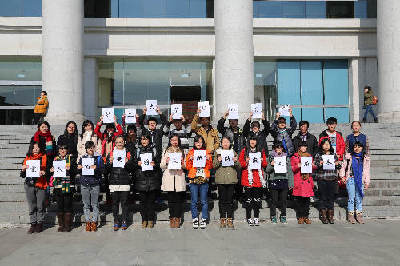MOOC Spurs Higher Education Reform
Since MIT’s groundbreaking provision of online courseware in 2001, the open learning movement has swept the world, giving millions of people access to the best education for free. But MOOC is distinctive in that it entails neither the “video-watch” unidirectional mode, nor the purchase of digital materials for a course. It instead offers a complete syllabus, including participation, feedback, homework, assessment, examination and certification. Strictly on par with real college courses, it involves many multi-media technologies that strengthen interaction between teachers and students as well as among students. It has also designed systems of homework assessment and examinations whereby students that qualify are issued with certificates signed by the tutor.
The cover story of the November 2013 issue of the U.S. Wired magazine was about 12-year-old Paloma Noyola Buenom, whose home is beside a garbage dump. Her education having been conducted entirely from online sources, she achieved the highest math score in Mexico’s national examinations. Howard A. Lurie, vice president for Content Development of edX, also cited a high-school student in India whom MIT enrolled because his scores were among the first three percent of all participants in the edX Circuits and Electronics course. Since 2012, the so-called “first year of MOOC,” such news items have enlivened the education field. First tier universities of the world, other than those cooperating with the “troika,” are now developing their own platforms. In September 2013, more than 20 British universities, along with the British Council, British Library and British Museum, launched Futurelearn.
Chinese universities naturally do not want to be left behind. Huang Zhen, vice president of Shanghai Jiao Tong University, even voiced the warning, “open, or be abandoned.” Soon after, Shanghai Jiao Tong University, Xi’an Jiaotong University, Southwest Jiaotong University, Beijing Jiaotong University and Taiwan-based National Chiao Tung University jointly launched Ewant, which offers 10 courses. In October 2013, Tsinghua University officially launched XuetangX, whose first 11 courses are among those most reputed at Tsinghua and Peking universities. They include Tsinghua’s Principles of Electric Circuits and History of Chinese Architecture, and Peking University’s Principles and Practice of Computer-assisted Translations. At the launch press conference, vice president Yuan Si of Tsinghua stated that XuetangX would cooperate with the government, universities and companies in exploring new modes of sustainable development and education reform. His speech implied fast-approaching reciprocal recognition among universities of academic credits and cooperation.
Flipped Classrooms Redefine Study Mode
Flip teaching, a main MOOC feature, represents a striking departure from traditional education methods. Under the conventional classroom scenario the teacher instructs students, who listen, take notes and do homework assignments to digest the theory. In flipped classrooms, however, the relevant topic is studied and understood beforehand. Class time is earmarked for discussion and exchanging ideas to encourage deeper thinking.
Chen Hangjie describes this approach as that of an echoing classroom. Students spend the time necessary beforehand listening and digesting knowledge. In the process they pinpoint any problems they have encountered in grasping the subject, which are resolved through exchanges with teachers and fellow students. It is otherwise impossible to pass the weekly tests and final examinations. Students accustomed to “force-fed” teaching have difficulty in adapting to this new study mode. This fact is verified by statistics that the supervisor of the Understanding Media by Understanding Google course published. They show that more than half of the 56,000 students that enrolled in the course quit after the first test, and that only 1,200 students obtained the leaving certificate.
Yu Jingsong, vice dean of the Department of Computational Linguistic Engineering of Peking University, is one of the pioneer Chinese MOOC teachers. He established the Principles and Practice of the Computer-assisted Translation course on XuetangX last October. Every week, Yu uploads the latest videos, materials and resources onto the website. After watching and reading these materials, students think about the teacher’s questions and later discuss them in the interaction zone. They then carry out their homework assignments.
“This method imposes high demands on students,” Yu said. “Each video is only a few minutes long, but as a condensed version of dozens of standard class hours, constitutes the core of the class.” Yu finds from a survey he conducted that students usually fast-forward the video to save time, but need to watch it time and again to grasp the points it raises. This auto-didactic approach enables students to finish a class at their own pace. Although it seems a flexible and free method of learning, it requires strict self-discipline and the pinpointing of specific targets.

Services
Economy
- Are You Ready to Perform?
- Beijing’s Green Courtyard
- China’s CSR on the Global Market Fast Track – An Interview with Xu Zongxiang, vice president of China South Locomotive & Rolling Stock Corporation Limited (CSR)
- China’s Changing Development Pattern
- China Accelerates Transformation of Its Economic Development Model
